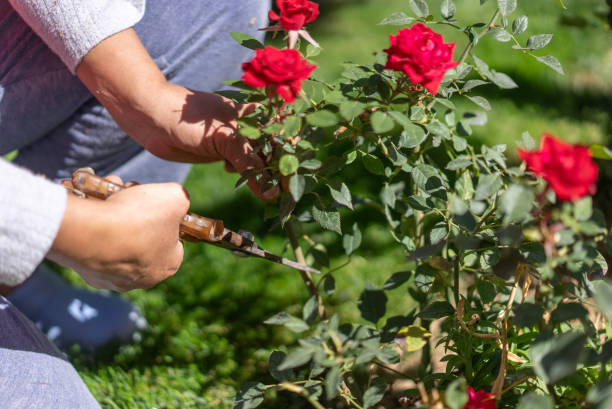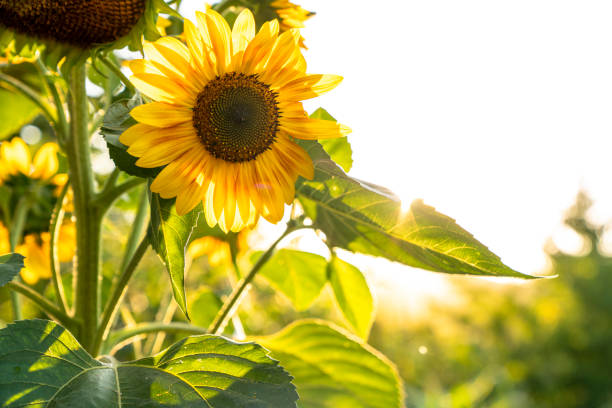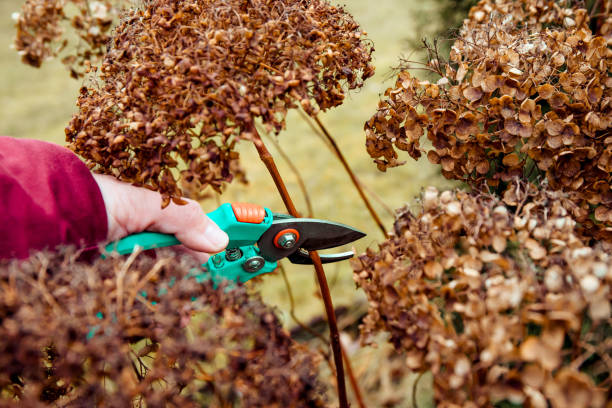Pruning roses in New Zealand isn’t just a gardening task; it’s a rite of passage for every rose enthusiast. Perfectly pruned roses not only enhance the aesthetic appeal of your garden but also boost the health and vigor of these classic plants. This article guides you through everything you need to know about when to prune roses in NZ and how to do it like a pro.
Understanding the Best Time to Prune Roses in NZ
Timing plays a pivotal role in the pruning process for roses, influencing their overall health and the quality of blooms they produce. In New Zealand, a country known for its diverse climate, understanding the optimal time for pruning is essential for maximizing the beauty and longevity of your rose plants. Typically, the best time to commence pruning is in late winter or early spring, right before the roses begin to emerge from dormancy. This period usually spans from June to August, but the exact timing can vary depending on the region’s climate.
Regional Variations
In New Zealand, there are distinct regional variations in climate, which necessitate slightly different pruning schedules:
- Northern NZ: For regions in the north, such as Auckland and Northland, it is advisable to commence pruning from late June to early July. This timing allows for the roses to be pruned before they break dormancy, ensuring that the plants are ready to capitalize on the warmer temperatures and longer daylight hours of spring. By pruning at this time, gardeners in Northern NZ can encourage healthy growth and abundant blooms, setting the stage for a vibrant and colorful garden display.
- Southern NZ: In the southern regions, including Canterbury and Otago, the optimal time for pruning is typically from mid-July to August. The colder climate in the south means that waiting until later in winter ensures that the roses are not pruned too early, minimizing the risk of frost damage to new growth. By delaying pruning until mid to late winter, gardeners in Southern NZ can protect their roses from potential frost injury while still allowing ample time for the plants to recover and prepare for the upcoming growing season.
- Coastal Areas: Coastal regions, such as those in the Bay of Plenty or Hawke’s Bay, experience milder winters compared to inland areas. In these coastal areas, it is recommended to begin pruning roses earlier, in late June. The warmer temperatures and reduced risk of frost allow for earlier pruning, promoting vigorous growth once spring arrives. By taking advantage of the favorable growing conditions in coastal regions, gardeners can give their roses a head start on the growing season, resulting in robust plants with abundant flowers when spring arrives.
Signs It’s Pruning Time
To determine the optimal time for pruning your roses, there are specific signs to look out for:
- Dormant Buds Swell: Keep an eye on your rose bushes as winter progresses for signs of dormancy breaking. Dormant buds will gradually start to swell, often displaying hints of red or green, indicating that the roses are preparing to emerge from dormancy. This swelling of buds signals an opportune time for pruning, as the plants are transitioning into active growth mode, making it easier for them to recover from pruning cuts and promote vigorous new growth.
- Last Frost Dates: Before embarking on pruning, it is crucial to ensure that the risk of frost has passed in your region. Pruning too early can leave tender new growth vulnerable to frost damage, compromising the overall health and vigor of your roses. To determine the optimal timing for pruning, consult local gardening resources or meteorological data to identify the average last frost dates for your area. Waiting until after the threat of frost has subsided ensures that your roses can safely withstand pruning without risking damage to emerging growth.
How to Prune Roses in NZ
Pruning roses in New Zealand requires specific techniques to promote healthy growth and prolific flowering. Below is a comprehensive step-by-step guide outlining the essential process for effective rose pruning.
Tools You’ll Need
Before embarking on the pruning process, ensure you have the necessary tools on hand:
- Sharp Secateurs: Sharp secateurs are essential for making clean cuts on smaller branches and stems. Ensure they are well-maintained to minimize damage to the plant and promote quick healing.
- Loppers: Loppers provide the necessary cutting power for thicker branches that cannot be easily pruned with secateurs. Choose models with sharp blades made from high-quality steel for cleaner cuts with less effort.
- Gardening Gloves: Protect your hands from thorns and sharp edges with a sturdy pair of gardening gloves. Opt for gloves made from durable materials like leather and regularly inspect them for wear and tear.
Step-by-Step Pruning Process
| Step | Description |
| Sanitize Your Tools | Begin by sanitizing your pruning tools to prevent the spread of diseases between plants. Use a solution of bleach and water (one part bleach to nine parts water) to sterilize the blades before and after each use. |
| Remove Dead or Diseased Wood | Inspect the rose bush carefully and identify any dead, diseased, or damaged branches. Prune back to healthy tissue, indicated by a greenish color on the cut surface. Make clean cuts at a 45-degree angle. |
| Shape the Plant | Aim to create an open vase shape when pruning roses to allow ample light and air penetration. Prune outer branches slightly shorter than inner branches, removing thin, weak, or spindly growth. |
| Prune to an Outward Facing Bud | Make cuts about 5 mm above outward-facing buds to encourage new growth in an outward direction. Avoid cutting too close to the bud to prevent damage. Pruning to outward-facing buds shapes the plant effectively. |
| Thin the Center | Thin the center of the plant to reduce congestion and improve airflow. Remove crossing or inward-growing branches, as well as those rubbing against each other, to promote healthy growth and flowering throughout the bush. |
Seasonal Care for Roses

Beyond pruning, maintaining the health of your roses involves regular seasonal care. By implementing specific tasks tailored to each season, you can ensure that your roses thrive and continue to produce beautiful blooms throughout the year.
Spring
In spring, as roses emerge from dormancy and begin their growth cycle, it’s essential to provide them with the necessary nutrients and conditions for optimal development.
- Fertilizing: Apply a balanced rose fertilizer after pruning to support new growth and encourage vigorous flowering. Choose a fertilizer specifically formulated for roses, as they have unique nutritional needs. Follow the manufacturer’s instructions for application rates and methods to avoid over-fertilization, which can lead to excessive foliage growth at the expense of flowers.
- Mulching: Add a layer of organic mulch, such as compost, bark chips, or shredded leaves, around the base of your rose bushes. Mulching helps conserve soil moisture, suppress weed growth, and regulate soil temperature. Apply mulch to a depth of 2-4 inches, ensuring that it does not come into direct contact with the stems of the roses to prevent rotting.
- Pruning: While major pruning is typically done in late winter or early spring, minor pruning may be necessary during the growing season to remove spent flowers and encourage continuous blooming. Deadheading, or the removal of faded blooms, promotes the production of new flowers and maintains the overall appearance of the plant.
Summer
During the summer months, roses are in full bloom, requiring additional attention to maintain their health and vitality in hot and dry conditions.
- Watering: Roses have high water requirements, especially during periods of prolonged dry weather. Ensure they receive adequate moisture by watering deeply and consistently, aiming to keep the soil evenly moist but not waterlogged. Water early in the morning or late in the evening to minimize water loss through evaporation and reduce the risk of fungal diseases.
- Pest Control: Monitor your rose bushes regularly for signs of pest infestations, such as aphids, thrips, or spider mites. These pests can cause damage to foliage and buds if left unchecked. Use insecticidal soap, neem oil, or other organic pest control methods to treat infestations promptly and prevent them from spreading to other plants in the garden.
Autumn
As summer transitions into autumn, it’s time to prepare your roses for dormancy and protect them from potential disease outbreaks.
- Preparing for Dormancy: With the onset of cooler temperatures, gradually reduce watering to allow your roses to enter dormancy naturally. Cease fertilization to prevent stimulating new growth, which can be vulnerable to frost damage as winter approaches. Mulch can also help insulate the soil and protect the roots during the colder months.
- Disease Prevention: Clear fallen leaves and debris from around your rose bushes to minimize the risk of fungal diseases, such as black spot or powdery mildew. These diseases thrive in damp and decaying organic matter, so maintaining a clean and tidy garden environment can help prevent their spread. Consider applying a fungicidal spray if your roses have a history of fungal infections, following the manufacturer’s recommendations for application timing and frequency.
- Winter Protection: In colder regions, provide additional protection for your roses during the winter months to prevent frost damage. Hill up soil around the base of the bushes to insulate the roots, or cover them with a layer of mulch or straw. Consider wrapping the canes with burlap or frost cloth to shield them from freezing temperatures and harsh winds.
Common Pruning Mistakes to Avoid
Pruning roses in NZ can sometimes go wrong. Here are some common mistakes to avoid:
Over Pruning
Over pruning is a common mistake that can have detrimental effects on the health and vigor of your rose bushes. Pruning too aggressively can stress the plant, causing it to divert energy away from flowering and towards new growth. This can result in reduced flowering and sparse foliage, diminishing the overall aesthetic appeal of the plant.
- Avoidance Strategy: When pruning roses, aim to remove no more than one-third of the plant’s overall growth. Focus on removing dead, diseased, or overcrowded branches, while retaining enough healthy foliage to support the plant’s nutrient needs. By practicing moderation and restraint in your pruning efforts, you can maintain the balance between growth and flowering, ensuring the long-term health of your roses.
- Proper Tools: Ensure you use sharp and sanitized pruning tools to make clean cuts. Dull or dirty tools can cause unnecessary damage to the plant, increasing the risk of disease transmission and hampering its recovery.
Ignoring Disease
Failing to address diseases promptly is another common mistake that can have serious consequences for your roses. Diseases such as black spot, powdery mildew, and rust can quickly spread throughout the plant if infected parts are not promptly removed. Ignoring disease can weaken the plant’s immune system and lead to stunted growth, leaf drop, and reduced flowering.
- Avoidance Strategy: Regularly inspect your rose bushes for signs of disease, such as discolored or spotted leaves, distorted growth, or powdery residue. If you detect any signs of disease, take immediate action to remove and destroy infected parts of the plant. Use sharp, sanitized pruning tools to make clean cuts, ensuring that you remove diseased tissue without spreading infection to healthy parts of the plant. Consider applying fungicidal sprays or treatments to prevent disease outbreaks and protect the overall health of your roses.
- Proper Hygiene: Practice good garden hygiene by removing fallen leaves and debris from around your rose bushes. This helps eliminate potential breeding grounds for disease-causing pathogens and reduces the risk of infection.
Wrong Timing
Timing is critical when it comes to pruning roses, and pruning at the wrong time of year can have adverse effects on plant health and flowering. Pruning too early, while the plant is still dormant, can remove protective foliage and expose tender new growth to frost damage. On the other hand, pruning too late in the season can interfere with the plant’s natural growth cycle and reduce flowering potential.
- Avoidance Strategy: Familiarize yourself with the optimal pruning times for roses in your region of NZ. Generally, pruning is best done in late winter or early spring, just before the plant breaks dormancy and begins actively growing. Avoid pruning during periods of extreme cold or heat, as this can stress the plant and hinder recovery. Consult local gardening resources or seek advice from experienced gardeners to determine the best timing for pruning your roses in your specific location.
- Weather Considerations: Pay attention to weather forecasts and avoid pruning during periods of extreme weather conditions, such as heat waves or heavy rainfall. Pruning under adverse weather conditions can exacerbate stress on the plant and compromise its ability to recover effectively.
Conclusion
Pruning roses in New Zealand is an essential practice for maintaining the health and beauty of these beloved plants. By following the proper techniques and understanding the best times for pruning, you can ensure your roses thrive and bloom spectacularly season after season. Remember, each cut is a new beginning for your roses, so prune with care and confidence.
FAQ
A: Summer pruning should be minimal, focused only on removing dead flowers and damaged stems to encourage a second bloom.
A: Unpruned roses may become overcrowded and prone to diseases due to poor air circulation and light penetration.
A: Climbing roses requires less pruning. Focus on removing old or dead wood and securing new shoots to support.
A: It’s not typically necessary in NZ, as roses heal quickly. If you choose to use sealant, opt for a natural product like aloe vera gel.




